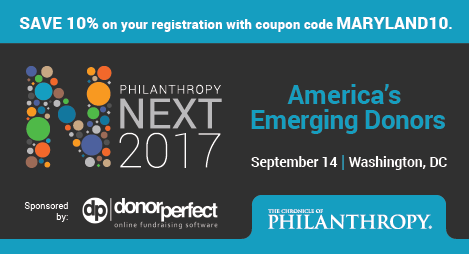Advice for Working with Diverse and Emerging Donor Groups
 Guest Post By Cody Switzer, assistant managing editor and director of digital products at The Chronicle of Philanthropy
Guest Post By Cody Switzer, assistant managing editor and director of digital products at The Chronicle of Philanthropy
Diversity, equity, and inclusion are at the forefront of the work of the nonprofit world – but are you thinking about it enough in your fundraising?
It’s a critical moment for nonprofits to pay attention to these issues as the demographics of America shift rapidly in a number of ways. Consider race and ethnicity, for one: By the 2020 census, demographers expect that no single racial group will make up more than half of the population under the age of 18.
That’s just one reason we’re focusing our annual conference this year on ways to appeal to donors of many different demographic groups.
We hope you’ll join us for Philanthropy NEXT: America’s Emerging Donors on September 14 in Washington, D.C.
We’ve assembled a team of fundraising experts who will share strategies for attracting staff and donors who are black, Hispanic, and Asian, as well as women, members of the LGBTQ community, and millennials. In our opening interview, we’ll talk with Emmett Carson, president of the Silicon Valley Community Foundation, about the vision that appeals to the diverse and demanding donors of today — and those of tomorrow.
If your organization is looking for ways to better appeal to emerging donor groups, here are a few tips gathered by my colleague Eden Stiffman in interviews with experts:
Build ties in the community. The most successful direct-response fundraising follows consistent and inclusive outreach, says consultant Mae Daniller, a direct-mail specialist. Her number one rule: Don’t send an appeal targeting a particular population unless you plan to keep showing your commitment.
Foster diversity within your organization. The people helping you create appeals should be representative of the people you want to reach, says Charrosé King, senior social-media specialist with the American Psychiatric Association.
Consider your own point of view. Think about how your identity affects the way you communicate and react. “If you’re young, if you’re middle-aged, you might bring your own lens, your own prejudices with you and not realize how something might appear to the population group that you’re trying to reach out to,” says Ms. Daniller.
Ask for feedback. Talk to members of the target community about your outreach so they can help guide your future strategy, says Mando Rayo, a communications strategist and co-founder of the New Philanthropists, an effort in Austin, Tex., to create a diverse pipeline of trustees, donors, and nonprofit executives. That could include testing appeals and messages through a focus group, a survey, in-depth interviews, or a simple chat, such as taking someone out for coffee.
We’ll talk about all of these topics and more at this year’s conference, so register today to earn 5.5 CFRE credits.
And because we’ve partnered with Maryland Nonprofits on this year’s conference, we’re offering an exclusive discount on your registration. Use coupon code MARYLAND10 to save 10% and reserve your spot today – but hurry, space is limited.
Cody Switzer is assistant managing editor and director of digital products at The Chronicle of Philanthropy. He leads The Chronicle’s online efforts, including products, strategy, and implementation of new features on philanthropy.com, as well as social media. He speaks and writes regularly on the ways technology is changing nonprofit communications, marketing, storytelling, and fundraising.
